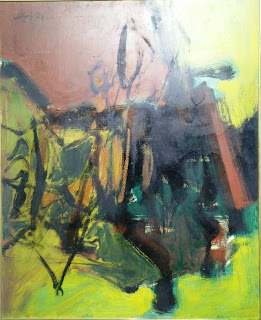MAPPING (V): PERALIHAN @ NVAG
...Ponderings about being Muslim are made manifest in complementing prints by Sulaiman Esa and Ponirin Amin, which should have been placed closer together. The former utilises iconographic juxtaposition to present an ongoing inquisition, while the latter formalises a meditative moment via gridlines, the girl in the foreground acting as an appreciative intermediary with the Supreme Being. At the opposite end of the gallery, one comes across in sequence - a reconceptualised pastoral landscape by Redza Piyadasa, two paintings by Ismail Zain highlighting the aura of cultural motifs, Joseph Tan’s large and misty scene, and a pioneering example of Islamic calligraphy as fine art by Ahmad Khalid Yusof. Appreciation quickly turns into irritation, as I notice that the English titles have been omitted from wall labels, an observation applicable to other exhibits in the gallery. Ponirin Amin – Dalam Sinar Mu (1978) Displayed together under the section titled ‘Pasca Dasar Kebudayaan Keb

